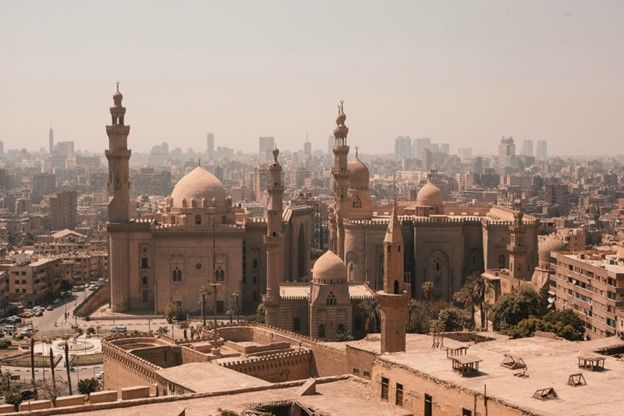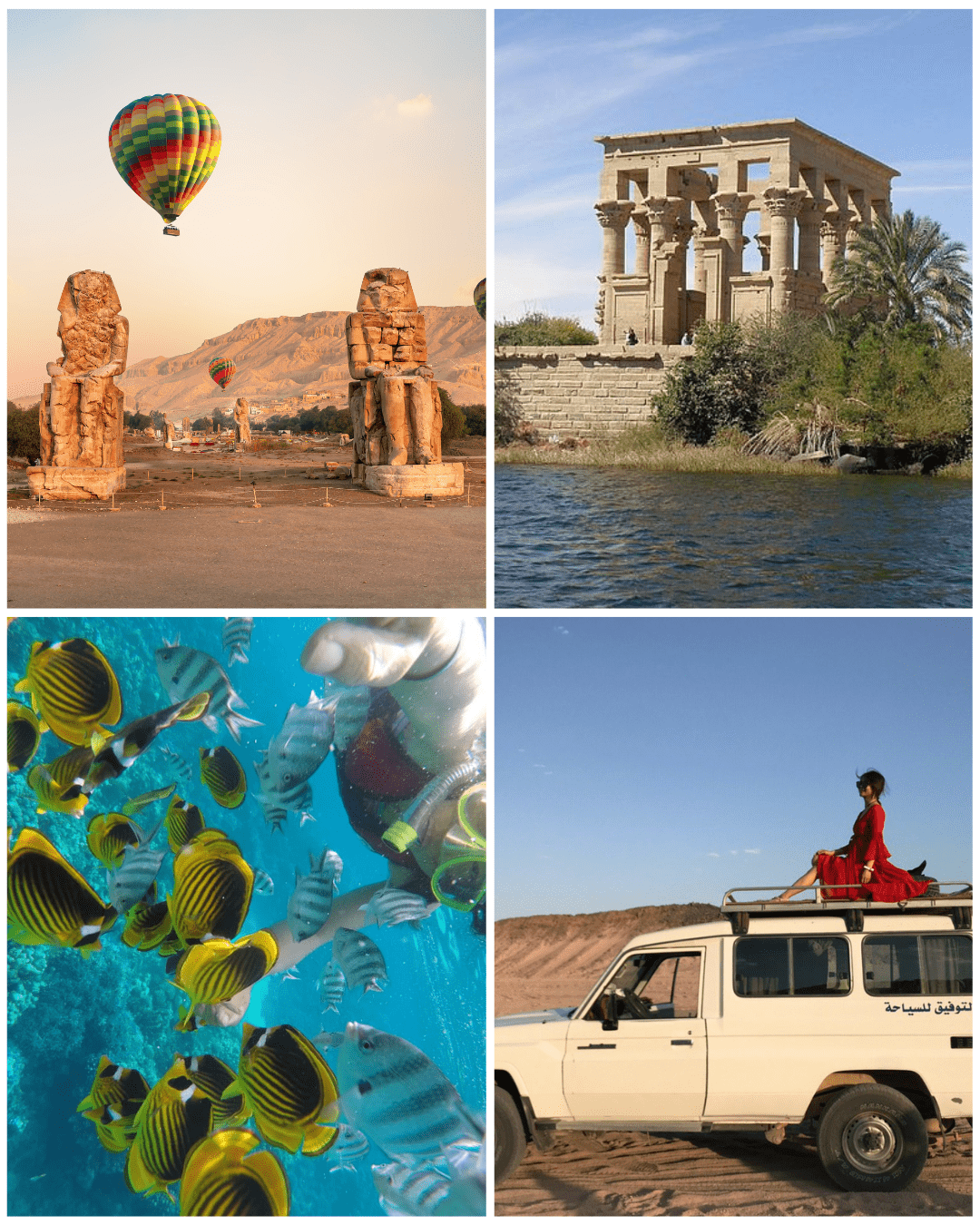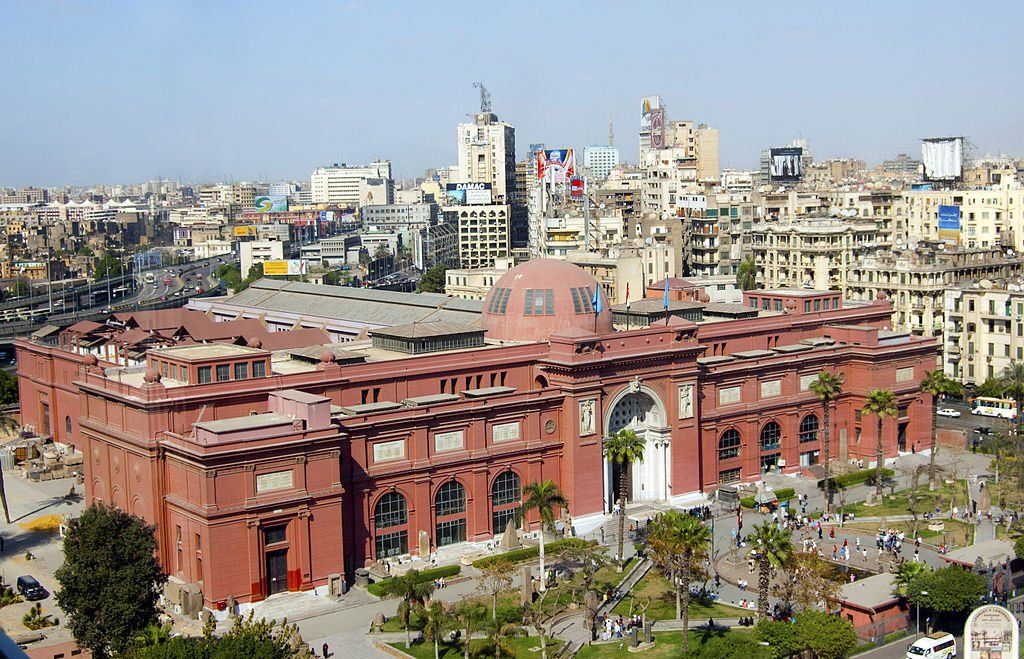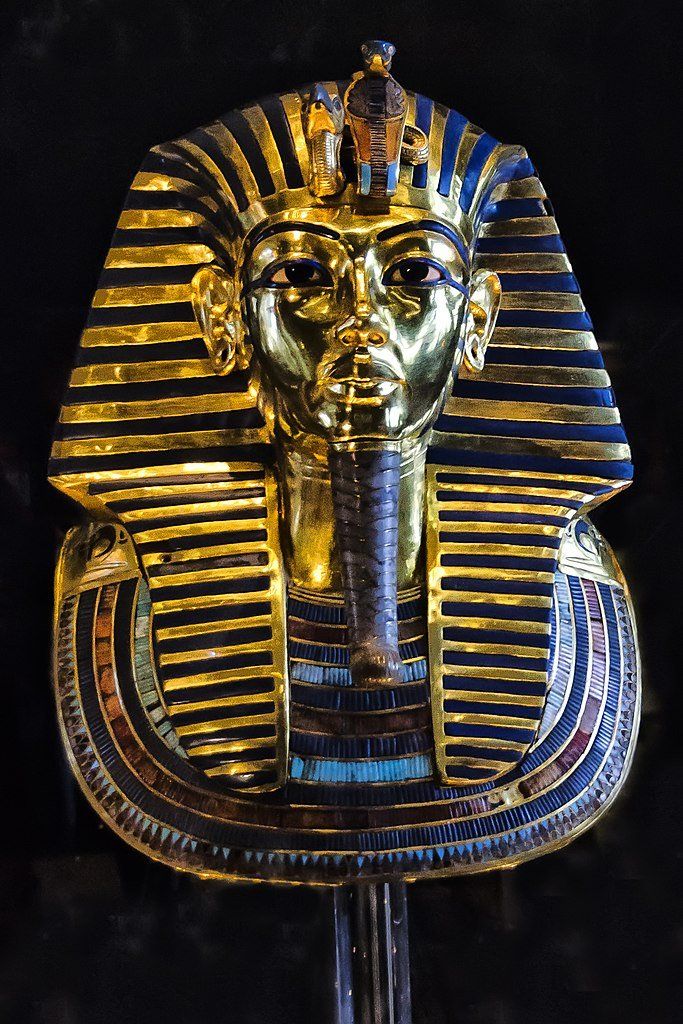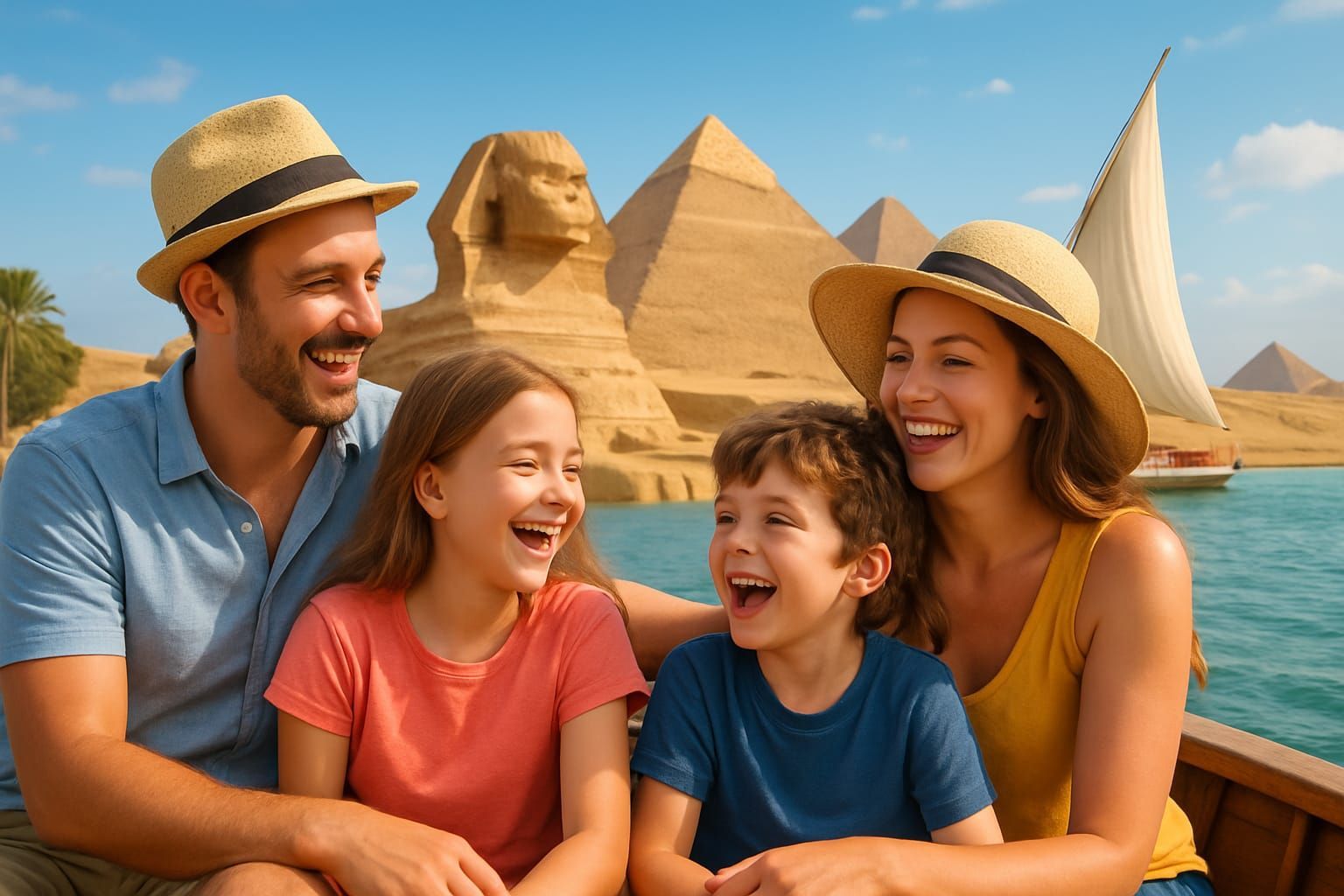Everything You Need to Know About the Grand Egyptian Museum
About
Since 1902, the first port of call for those wishing to view Egypt’s ancient treasures has been the Egyptian Museum in Cairo’s Tahrir Square. Inaugurated almost 120 years ago, however, the museum has become something of a relic itself. It was built to accommodate 35,000 artefacts and 500 daily visitors; today, with more than 140,000 objects (most of them languishing in storage) and up to 7,000 visitors each day, overcrowding is an obvious issue.
In 2002, a solution was presented when the Egyptian Ministry of Culture announced its intention to construct a replacement – an ultra-modern masterpiece of a building to be named the Grand Egyptian Museum. Now nearing completion and scheduled to open by mid-2021, it is set to be the largest archaeological museum complex in the world; and in the words of its director general, Tarek Tawfik, “the museum of the 21st century”.
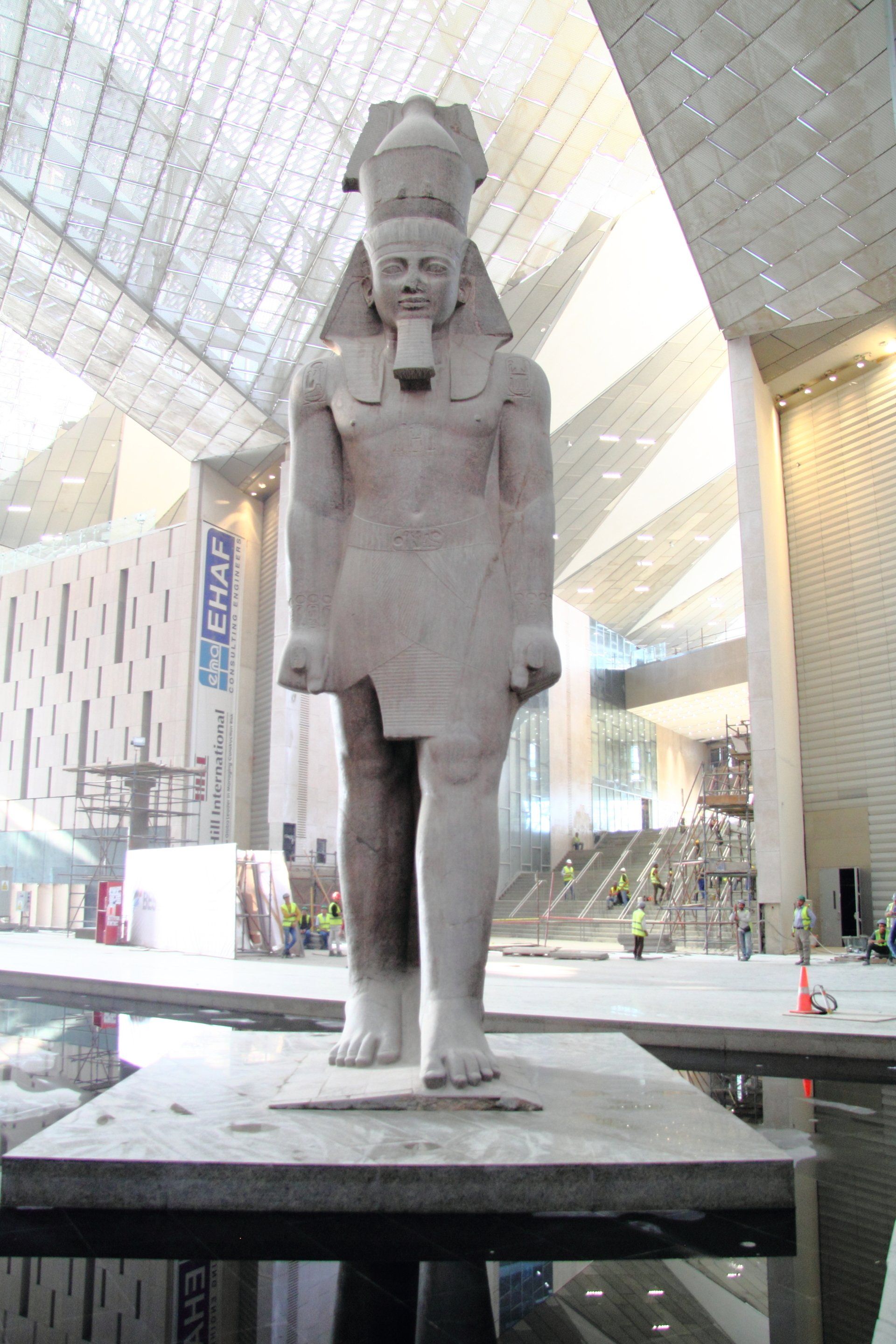
Timeline of the Museum
January 2002 - The Egyptian Ministry of Culture announces an international competition, inviting architects from all over the world to submit designs for the new Grand Egyptian Museum. The competition is supervised by the International Union of Architects and conducted under the patronage of UNESCO; and attracts 1,557 entries from 82 countries. It is the second-largest architectural competition in history.
February 2002 - Even before a winner is announced, then-President Hosni Mubarak unveils the foundation stone for the museum as a symbol of Egypt’s commitment to protecting its astonishing heritage. The stone is located just two kilometres from the Pyramids of Giza, Egypt’s most recognisable ancient site. This is a strategic choice that will allow visitors to visit both the pyramids and the museum in a single trip to the Giza Plateau, rather than having to contend with central Cairo traffic to reach Tahrir Square.
June 2003 - The results of the competition are announced, with Irish company Heneghan Peng Architects taking first prize. In total, the final design was the work of 14 different companies across six countries (Egypt, Ireland, England, Canada, The Netherlands and Austria). 300 individual experts came together to perfect it.
2005 - The implementation of the project begins, having been divided into three main phases. The first phase is to be the construction of the museum’s enabling works. The second is the Conservation Centre, energy centre and fire station; while the third sees the bulk excavation, main building and master plan completed.
2011 - The Arab Spring spreads to Egypt, culminating in the Egyptian Revolution of 2011. The result is a period of political instability and economic hardship, caused by a dramatic decline in tourism revenue (an income that previously accounted for more than 11% of Egypt’s GDP). Consequently, building on the Grand Egyptian Museum grinds to a halt.
2012 - Construction of the third phase of the museum is awarded to a joint venture between the Belgian company BESIX and Egyptian company Orascom.
2014 - Abdel Fattah el-Sisi becomes president by popular election and stability is gradually restored to the country. Tourism begins to recover and construction on the Grand Egyptian Museum resumes.
2015 - Minister of Antiquities Mamdouh al-Damaty announces to the press that the museum will be ready for a partial opening by May 2018.
2018 - In the days before the museum is due to open, a fire breaks out and although no artefacts are damaged in the blaze, the partial opening is postponed. In November 2018 the estimated date for a full opening is pushed back to the final quarter of 2020.
2019 - The museum opens briefly for private, behind-the-scenes tours. However, these prove so popular that they have to be suspended as they are impeding construction progress.
2020 - The planned opening of the museum is postponed again due to the Covid-19 pandemic.
January 2021 - Egypt Today reports that construction at the museum is now 97% complete. The opening date is expected for mid-2021.
Design and Layout
A graceful structure of glass and concrete, the new Grand Egyptian Museum manages to be both thoroughly modern and in tune with its ancient surroundings. It is built on a slope that extends upwards from the Nile Valley to the Giza Plateau, while its setting in between the Pyramids of Giza and modern Cairo is a literal reflection of its role as gateway between past and present. From the top floor of the museum, visitors are afforded sweeping views of the plateau’s three iconic pyramid complexes; the oldest and largest of which is the last surviving Wonder of the Ancient World.
The museum’s north and south walls line up directly with the Great Pyramid of Khufu and the Pyramid of Menkaure. A plaza of date palms paves the way to the main entrance, which in turn opens onto a vast, light-filled atrium and a Grand Staircase lined with colossal statues of the ancient gods and pharaohs.
Ascend the staircase to reach the exhibition galleries, which are divided into four eras: pre-dynastic and Old Kingdom, Middle Kingdom, New Kingdom, and Greco-Roman. Within each of these eras, artefacts are further subdivided into themes like Beliefs and Eternity, and Kingship and Power – giving visitors a cohesive, engaging insight into what life might have been like at each stage of Egypt’s fascinating history. To the right of the Grand Staircase lie two separate galleries dedicated to artefacts removed from the world-famous tomb of Tutankhamun.
In addition to its exhibition spaces, the museum boasts a library and research centre, an interactive children’s museum with state-of-the-art visuals capable of keeping younger guests enthralled, a conference centre and 3D cinema, and a public square lined with shops, cafés and restaurants. Outside the museum building visitors will find a series of themed parks and gardens, including one named the Nile Park in honour of Egypt’s life-giving river.
At the museum’s heart is the Conservation Centre. Spread out over 7,000 square metres and incorporating no fewer than 17 specialist laboratories, it is one of the largest conservation centres in the world. Some of the laboratories are dedicated to the restoration and repair of ancient treasures. There’s a Stone Lab, a Wood Lab, an Organic Lab for handling textiles, leather and papyrus, and an Inorganic Lab for ceramics, glass and metals. There is also a dedicated lab for human remains. Other laboratories are intended for analytic purposes and include a chemical analysis lab, an x-ray room and a photographic studio.
Statistics
There are a lot of numbers that go into the making of the world’s largest archaeological museum complex. Here are a few of them:
- The museum plot covers 480,000 square metres of land.
- It has been designed to accommodate up to 15,000 visitors per day and is expected to draw five million visitors annually from the moment it opens. Within a few years, this is expected to increase to eight million annually (more even than New York City’s Metropolitan Museum of Art).
- It was initially estimated that the museum would cost a total of US$550 million, with $300 million financed from Japanese loans. It is likely that the final cost will exceed $1 billion.
- There are currently 7,000 people working in three shifts, day and night, to complete the museum in time for its anticipated 2021 opening.
- 400 of these are archaeological and restoration experts working in the Conservation Centre.
A Trove of Ancient Treasures
When it opens, the Grand Egyptian Museum will house more than 100,000 artefacts covering 7,000 years of Egyptian history from prehistoric times, through the Pharaonic era to the time of the Ptolemies and Romans. Roughly a fifth of these items will be on display for the first time ever, having been relocated from museums and storage facilities across Egypt. Although the majority of artefacts come from the existing Egyptian Museum, many come from places like Luxor, Alexandria and Fayoum.
Because so many of the artefacts have been neglected in storage facilities for years, they have had to go through extensive restoration at the Conservation Centre before being deemed fit for display. In August 2019, a CNN report stated that the Conservation Centre had received some 46,000 artefacts, of which 42,000 had already been restored to their former glory.
One of the first artefacts to find a new home at the museum is a 3,200-year-old, 83-ton statue of Ramesses II carved out of red granite. For many years the statue stood in Cairo’s Ramses Square; but in 2006 it was transported to the Giza Plateau to avoid further erosion as a result of pollution. It was installed in pride of place in the entrance of the museum in 2018. Ramesses II will be joined by 87 other colossal statues to be displayed along the length of the atrium’s Grand Staircase. Another highlight to look out for is the 42-metre solar boat discovered in a burial pit beside the Great Pyramid.
The Tomb of Tutankhamun
For most visitors, the main attraction of the Grand Egyptian Museum will be the two galleries displaying the entire collection of artefacts from the tomb of the boy king, Tutankhamun. A relatively insignificant monarch in his own lifetime, Tutankhamun is nevertheless one of the best-known of the Egyptian pharaohs thanks to the momentous discovery of his intact tomb and all its treasures by British archaeologist Howard Carter in 1922.
Previously, just over a third of the priceless artefacts from King Tut’s tomb were on display in the Egyptian Museum. All 5,400 of them will be displayed at the Grand Egyptian Museum, in the exact same way that they were found by Carter and his team in 1922. In this way, visitors will be able to relive the excitement of what continues to be one of the most signifiant archaeological discoveries of all time. Highlights of the collection include Tutankhamun’s golden funerary mask and sarcophagus, his throne and jewels, his ornate golden chariots and specially commissioned funerary beds. Look out for the king’s jewelled sandals, too. Initially considered unsalvageable, they are now one of the greatest success stories of the Conservation Centre.
Practical Information
The Grand Egyptian Museum will be easily accessible via the Cairo ring road. A new line is being constructed to connect it to the Cairo metro, while the new Sphinx International Airport is a 30-minute drive away. The ability to fly in and bypass the majority of Cairo’s traffic means that day trips from the Red Sea and other areas of Egypt will soon be a realistic prospect. Tickets for the museum will be priced at EGP 400 (approximately $25) for foreigners with a 50% discount for students. The price for Egyptian tourists will be EGP 60.



